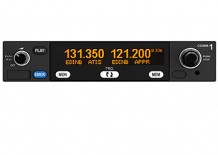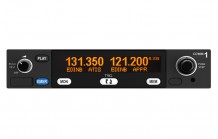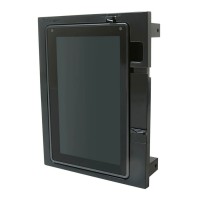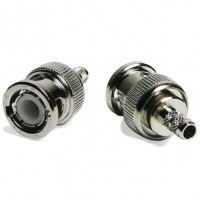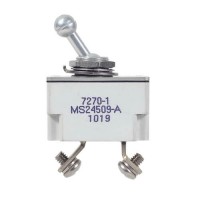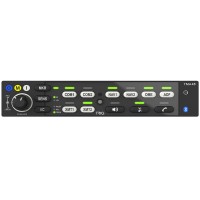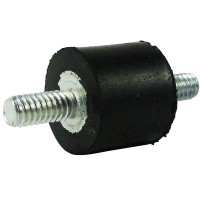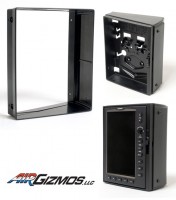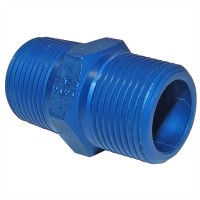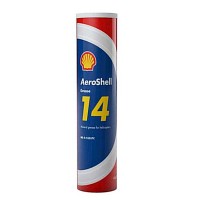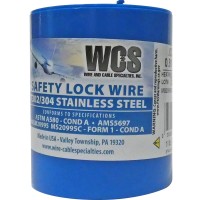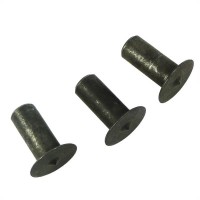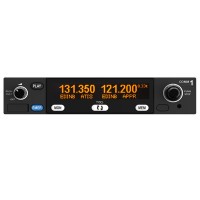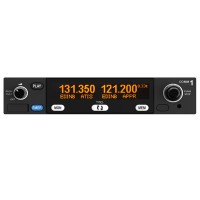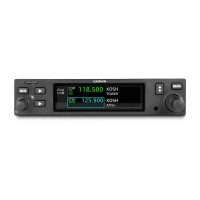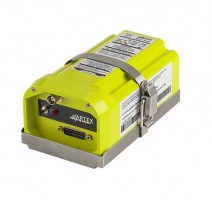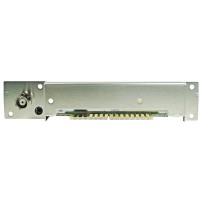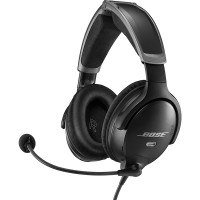1-877-795-2278 | info@aircraftspruce.ca
Aircraft Spruce Canada
Brantford, ON Canada
Corona, CA | Peachtree City, GA
Chicago, IL | Wasilla, AK
Aircraft Spruce Canada
Brantford, ON Canada
Corona, CA | Peachtree City, GA
Chicago, IL | Wasilla, AK
THE AVIATION SUPERSTORE FOR ALL YOUR AIRCRAFT & PILOT NEEDS | 877-795-2278
Trig TY96 / TY97 Installation Kit
$445.00/Each
Part# 11-15378
MFR Model# 01650-00
MFR Model# 01650-00
Overview
|
The TY96 and TY97 VHF radio systems are ED-23C compliant class C (25 kHz offset carrier) and class H1 and H2 (8.33 kHz offset carrier) VHF radios. The TY96 has a nominal power output of 10 watts, and meets the power output requirements for Class 3 and Class 5. The TY97 has a nominal power output of 16 watts, and meets the power output requirements for Class 3 and Class 5. The TY96 and TY97 are certified to ETSO 2C169a, 2C128a, TSO C169a and TSO C128a.
The TY96 can be powered from either a 14 volt nominal or 28 volt nominal DC power supply with no configuration changes required. The TY97 requires a 28 volt nominal DC power supply. The installation kit for Trig TY96/TY97 transceivers include: tray, connector, and manuals. Note: Includes EASA Form 1. Suitable for Part 23/LSA/Experimental. |
Features
The TY96/TY97 installation kit includes the following items:| Unit Description | Qty |
|---|---|
| Connector Mounting Plate | 1 |
| Connector Standard Mount 25 Way D receptacle to M24308 | 1 |
| Crimp Socket Contact, Wire size 20-24 AWG | 25 |
| D-Sub Shell | 1 |
| D-Sub Shell Clamp | 1 |
| D- Sub Shell Cover | 1 |
| BNC Female to Blind Mate Adapter | 1 |
| Washer, 7/16", Plain, Stainless Steel | 1 |
| Circlip, 7/16", External Stainless Steel | 1 |
| Washer, 7/16", Wave, Stainless Stell | 1 |
| Screw, Pozidrive, Csk Head, M2.5 x 5mm, Pre Patch | 2 |
| Screw, Pozidrive, Pan Head, M2.5 x 5mm, Pre Patch | 6 |
| Screw, Pozidrive, Pan Head, M2.5 x 8mm, Pre Patch | 4 |
| Screw, Philips, Csk head, 4-40 UNC x 0.312", Pre Patch | 2 |
| Washer, M2.5 Rect Sect, Spring | 1 |
| User Label Sheet | 1 |
| USB Flash Drive | 1 |
Specifications
- Height: 33 mm (1.30")
- Width: 159 mm (6.25")
- Length: 231 mm (9.1") behind the panel / 273mm (10.77") overall
- Weight: 2.33lbs (1.06Kg)
Documents
Q&A
Please note, Aircraft Spruce Canada's personnel are not certified aircraft mechanics and can only provide general support and ideas, which should not be relied upon or implemented in lieu of consulting an A&P or other qualified technician. Aircraft Spruce Canada assumes no responsibility or liability for any issue or problem which may arise from any repair, modification or other work done from this knowledge base. Any product eligibility information provided here is based on general application guides and we recommend always referring to your specific aircraft parts manual, the parts manufacturer or consulting with a qualified mechanic.

 Aircraft Spruce Canada
Aircraft Spruce Canada






